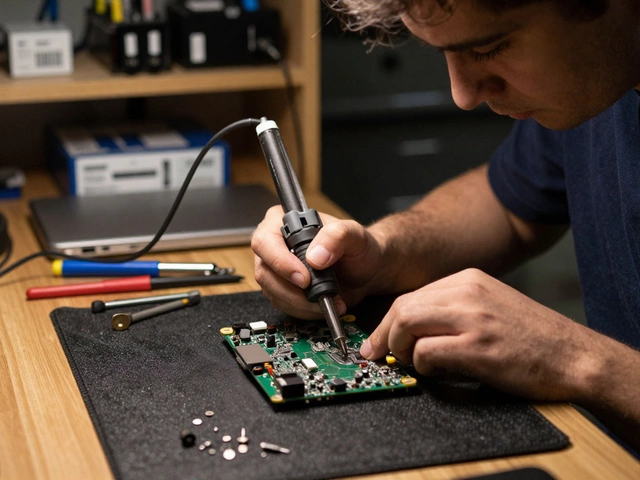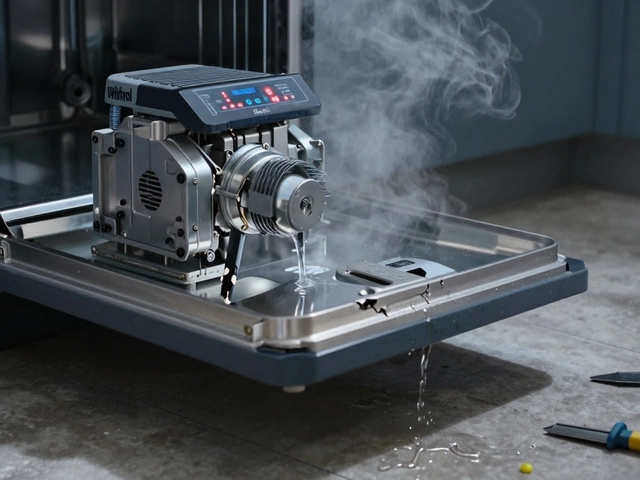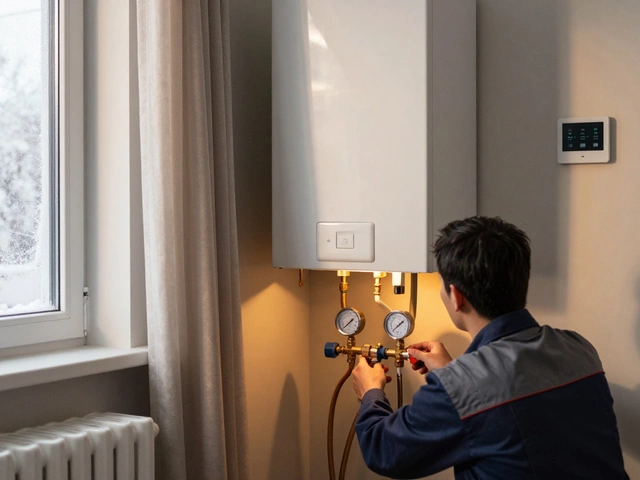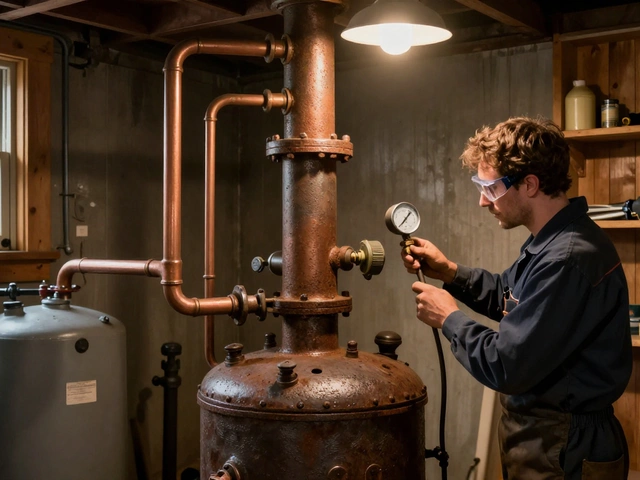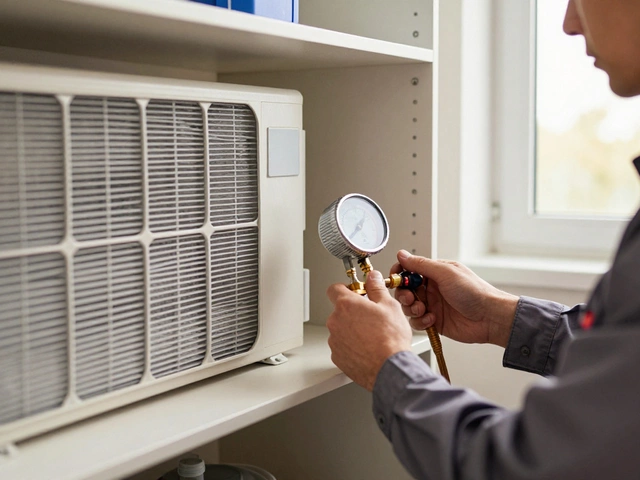Warm milk, melted ice cream, and limp veggies—nothing ruins a day like a refrigerator that’s lost its cool. This isn’t just an inconvenience; spoilage can be expensive. It’s no wonder that fridge problems are a nightmare in most households. Luckily, not all hope is lost when your refrigerator stops cooling. Sometimes the fix is wildly simple. In other cases, it’s a little more involved but still totally doable with the right know-how. Let’s jump in and explore why your fridge might be letting you down and exactly how to get those chilly temps back where they belong.
Why Your Refrigerator Stops Cooling: Causes You Can Actually Fix
First thing, don’t panic and toss the groceries just yet. About 40% of home refrigerator failures are linked to issues that can be solved without professional help. Modern refrigerators are built to last—statistically, most of them hang in there for a solid 10–15 years. Still, they can run into trouble from things as basic as dirty coils to frost build-up. So, what’s usually to blame?
- Blocked Air Vents – Overpacked shelves, especially in the freezer, can block cold air from circulating. The magic number is about two inches of space between items and vents. Without airflow, nothing stays cold.
- Dirty Condenser Coils – Dust, pet hair, and kitchen grease gunk up coils over time. This makes your fridge work harder and cool less efficiently. You should give those coils a good clean twice a year. According to a 2023 survey by Consumer Reports, neglected coils cause up to 30% of fridge failures.
- Temperature Settings – Kids messing with the controls? Make sure the thermostat is set between 35°F and 38°F. Freezer should be around 0°F. If digital controls glitched after a blackout, reset the temp settings.
- Frost Build-Up – Frost inside the fridge or freezer is a big red flag. A faulty door seal lets condensing air in, ramping up frost and shutting down airflow.
- Clogged or Frozen Drain – Water pooling under crisper drawers usually means a blocked defrost drain. That builds ice, blocking the fan from blowing cold air.
- Fan Failures – Both the evaporator and condenser fans need to spin freely. If not, airflow stops, and so does the chill.
Quick tip: Your fridge should run in near-silence, with only the faint hum of motors. Gurgling, clicking, or buzzing are clues that something’s jammed or broken. And trust your nose—anything that smells like burnt plastic means a motor or electronic board could be kaput.
Now, here’s something most manuals won’t tell you: Most cooling issues aren’t with the expensive compressor. About two-thirds of cases can be solved by cleaning something or moving items around. Don’t believe the hype that repair means buying a new fridge.

DIY Steps to Fix a Refrigerator Not Cooling
Ready to roll up your sleeves? Good news—many fixes won’t take more than a screwdriver, a flashlight, and maybe a vacuum. Here’s what you do…
- Check the Power – Obvious but crucial. Make sure the fridge is plugged in, the circuit breaker isn’t tripped, and the outlet works. Sometimes, outlets blow after storms.
- Inspect the Thermostat – Digital controls can get buggy. Hard reset the fridge by unplugging it for 5 minutes, then plugging it back in. Re-check the temp.
- Clean the Condenser Coils – Unplug the fridge and find the coils at back or underneath. Use a coil brush or a vacuum with a hose attachment. Even a paintbrush works in a pinch. Removing dust every 6–12 months can increase efficiency by up to 30%.
- Check Door Seals (Gaskets) – Close the fridge door over a piece of paper. If you can pull out the paper easily, the seal is shot. Scrub sticky seals with warm water and mild soap. Replace them if they’re cracked or warped. Leaky seals let warm air in and cold air out, fast.
- Unclog the Defrost Drain – Pull out the bottom crisper drawer and look for a little drain hole. Clear obstructions with warm water and a turkey baster, or with a thin pipe cleaner. This prevents ice dams that choke off airflow.
- Defrost the Freezer – Ice everywhere? Unplug the fridge for 12–24 hours with the doors open. Catch water with towels. Restart and monitor it after plugging back in. Manual defrosting works wonders for frost-related issues but takes time.
- Listen and Look for Fans – When you open the freezer, the evaporator fan should stop then restart when you press the freezer light switch. No spin or strange noise means it’s time for a replacement fan.
- Rearrange Food – Don’t block the vents. Spread items out so air reaches every corner.
- Level the Fridge – A fridge that isn’t level works harder and seals poorly. Adjust the feet so it’s even front to back and left to right. A bubble level app on your phone can help.
- Check for Frost in Back Panel (Freezer Section) – Remove the panel with a screwdriver (after unplugging the fridge). Lots of frost? The defrost heater or timer may have failed.
- More advanced tip: If you’re handy with a multimeter, you can test the continuity of the thermostat and defrost heater. Most people call in a pro at this stage, but tons of guides out there walk you through it with step-by-step photos.
Don’t forget to let the fridge settle after any big move or cleaning session. It can take 24–48 hours for temps to stabilize. If it’s still not cool after all these steps? You might be looking at a more technical fault, like a bad start relay or burned-out compressor. That’s when you call a fridge tech—especially if the compressor’s warranty is still active.
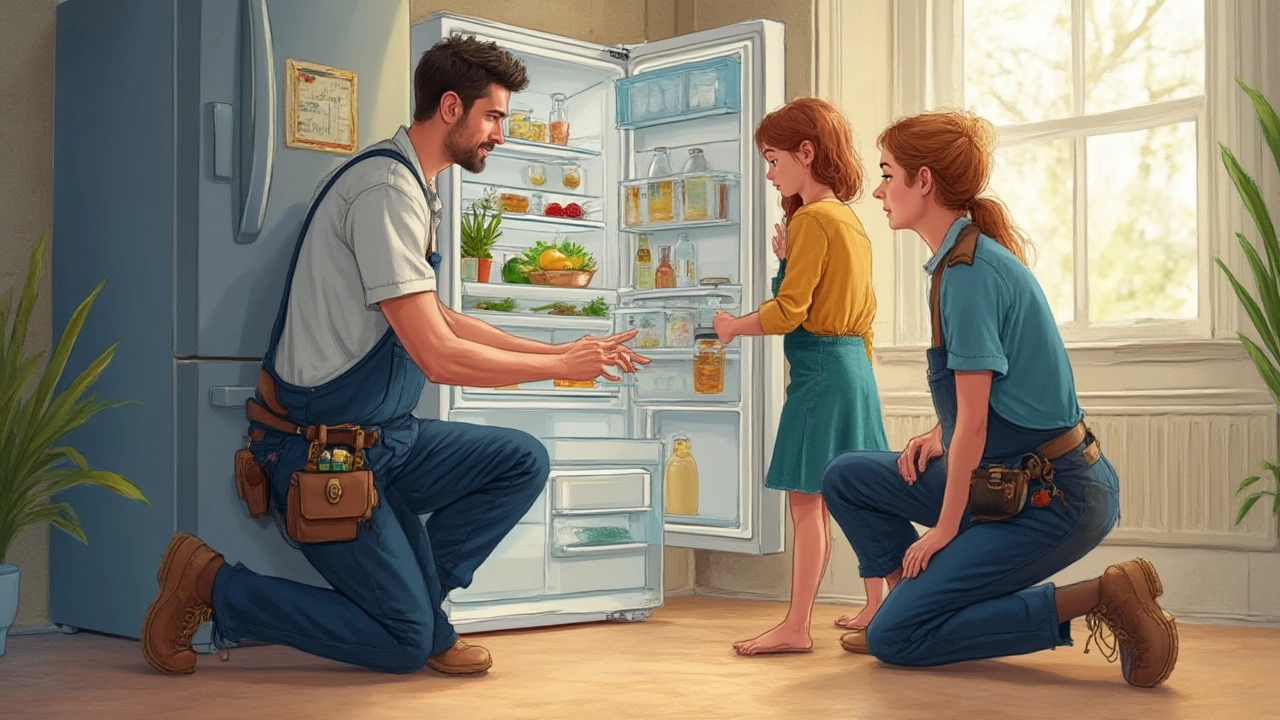
Common Myths and Expert Tips For Lasting Refrigerator Health
If you think you always need a pro for fridge issues, you’re in for a surprise. True, certified techs are experts, and there’s a time to call them in. But folks waste a fortune on house calls for things they can fix in ten minutes.
Let’s bust a few myths while we’re here. One, moving your fridge against the wall doesn’t make it work better. In fact, you want at least an inch of breathing room around the sides and back. Two, maxing out your fridge with food does not mean it’ll cool better. Packed shelves block airflow, leading to warm spots (and wilted lettuce). Three, open containers of food release moisture, which builds up frost and stifles cooling power.
Did you know running your fridge at colder than 32°F actually makes it LESS efficient? It can’t freeze like your freezer, and the excessive cold strains the system (while ruining crispers meant for fresh food). Set it between 35–38°F for peak operation. And here’s a weird fact: about 10% of fridges that seem “broken” only have a tripped GFCI kitchen outlet or an unplugged cord from vacuuming.
Now, onto pro tips. Always vacuum under and behind your fridge twice a year—turns out, a dust-free fridge cools 15% faster. If you have pets, do this quarterly. If you live in a humid place or keep your fridge in a hot kitchen, open the doors less. Every time you peek inside, you drop the internal temperature about 5°F—and it takes 20–30 minutes to rebound.
| Common Refrigerator Cooling Issue | DIY Difficulty | Usual Fix | Pro Repair Cost (USD) |
|---|---|---|---|
| Dirty Coils | Easy | Vacuum/brush coils | 80–$120 |
| Frosted Evaporator | Medium | Manual defrost, check heater/timer | 100–$250 |
| Defective Thermostat | Medium | Replace thermostat | 120–$200 |
| Failed Door Seal | Easy | Replace gasket | 60–$125 |
| Compressor Failure | Hard | Call pro, replace compressor | 400–$600 |
If you haven’t kept track, most cooling failures have a simple fix you can handle. The real challenge is knowing which step to try first. If you’ve lost food to spoilage, download a digital food log to claim insurance—many home policies cover spoiled groceries over $500 if you can prove your fridge failed. Always check if your appliance’s warranty is active (the model and serial number are inside the fridge, usually on a side wall).
No one wants to play detective when the milk turns sour. But the bulk of refrigerator problems have real solutions if you take it step-by-step. Tackle airflow, clear those coils, seal the doors tight, and you’re well ahead of the game. If you give your fridge a little love, it’ll keep your food cool for years—saving money on groceries and keeping your kitchen running smooth.

